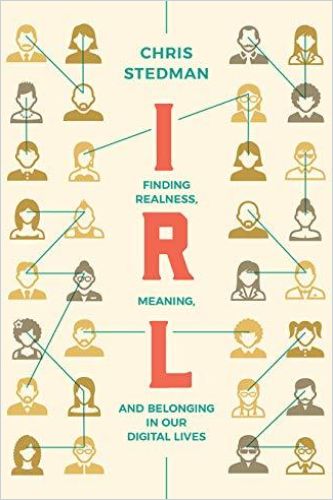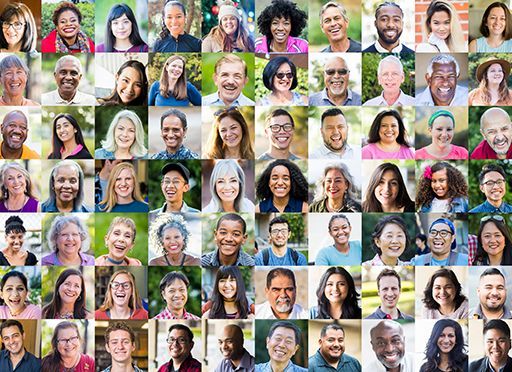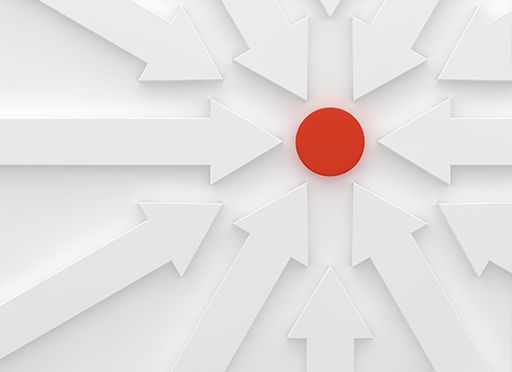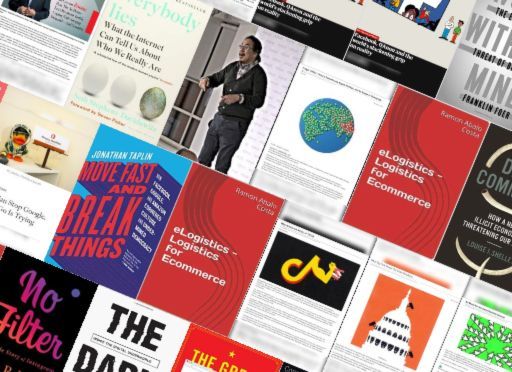Chris Stedman explores the moral and philosophical implications of online communities in terms of personal authenticity and purpose.

Authenticity Online
Internet communities spur social movements even as social media creates distance by enabling people to disguise their true selves. Many web users exist in a gap between their online and offline lives, though their online postings – like virtual tattoos – stay permanently etched in digital history.
Chris Stedman analyzes multiple philosophical, emotional and moral aspects of a digital presence and suggests improved online habits anyone can develop to find honest community and create meaningful connections even in the digital age.
Authenticity
People search for personal authenticity, but it can prove elusive. For example, traditionally people looked for community in religious congregations. In the digital age, many pursue this quest through online groups and social media.
Being online can help people find connections they deem important, personally valid and of high quality. The communities they join may reveal a lot about their character. These groups can provide support and a sense of belonging to those who have obscure interests or suffer social isolation.
When you try something unfamiliar…you have a chance to figure out who you are.Chris Stedman
The internet allows people to display a personal state or status that doesn’t necessarily reflect their true emotions. People post happy images that may belie their actual situation, perhaps expressing the state they wish to achieve and fearing that others could see them as unsuccessful, unhappy or alienated.
Online and Offline Lives
In face-to-face exchanges, people can try to control how they appear to others, in order to project competence and avoid criticism. Now, people are aiming for the same level of control online, hoping their lives will appear attractive even though digital platforms give them less control. Before the internet, people could conceal parts of their lives. For example, parents seldom saw pictures of their children’s activities at college.
To be more real online…we may have to let go of our desire to be seen as strong and stitched together and let the stuffing spill out.Chris Stedman
The desire to appear capable and well-adjusted informs people’s online profiles. Many social media users cover up their emotions to maintain a perfect image. But to be real, they must expose the gaps they’re attempting to hide – and share their highs and their lows.
To merge your online self with your offline life, share your imperfections alongside the polished version of your life. Practicing authenticity can help you find true connections and belonging in the digital realm.
Community and Belonging
People need to feel they belong.Stedman reports that as fewer Americans identify with a religion, they are looking elsewhere for the belonging faith once provided. The internet serves as an endless arena for participation. The multitude of active online groups offers options for people to choose where to affiliate without having to commit to a single group’s viewpoint.
Even as technology advances, what we’re grappling with has stayed the same — we’re deciding who to be intimate with and who to keep at arm’s length.Chris Stedman
Whether an internet community can satisfy the human need for purpose and belonging depends on how people approach showing themselves online. Consider that social media have helped people connect within social and political movements, such as the Arab Spring or the drive to connect members of the disabled or transgender communities. But some digital communities can increase people’s loneliness by punishing honesty – and that risk causes people to hide their true selves.
Individuals must strive to find connection without losing authenticity. For example, instead of posting selfies, turn your photos into vehicles to tell your story and connect.
Internet Profiles
Paper maps and atlases detail the world as mapmakers see it. Mapmakers must choose what to show; by the very nature of their trade, they tell an incomplete story. For example, large cities appear more prominently than smaller towns, and that affects how readers perceive these locations.
Transforming our world in many ways, the internet has been a democratizing force for the disempowered and marginalized. Chris Stedman
In the digital space, people also create maps of their lives through posts, timelines and photos. These, too, must reflect curated snippets, not a comprehensive whole.
The internet’s limitations, Stedman finds, include the way social media can distort people’s view of themselves by encouraging them to believe what others say about them. The way the loudest online voices sway conversations and bend truths is a hazard, and so is the way social media encourage people to post continually for fear of missing out or becoming invisible. What’s more, algorithms often determine what content shows up in a user’s online feed. As a result, people miss opportunities for serendipitous discoveries.
Global Communities
The internet can close distances, but people create distances by distorting their online activity. People construct their image to fit how they want others to see them. Social media encourages comparisons, but when people compare their complex lives with the simplified – often false – versions of other people’s online personas, they hesitate to share their real experiences. These exchanges also lack the context of face-to-face interactions.
Digital tools are as capable of helping us feel seen in negative ways as in positive ways, and as able to help us disappear when we want to as they are to make us feel invisible when we don’t.Chris Stedman
But there are advantages to online groupings as well. People have strong and weak ties in traditional relationships, but social media enables them to maintain weaker ties more easily. These connections often offer different viewpoints than people get from their close friends.Connecting with disparate groups helps people create a self-constructed social community that could provide a sense of belonging their offline lives may lack.
Eternal Posts
Internet posts have staying power. Like tattoos, these posts become permanently inked in your digital timelines.
We want to be understood in a way in which we call the shots, in which we’re in control of what others understand. Chris Stedman
Rewriting an online story is not easy, yet people change over time and may not appreciate others judging them on the basis of posts from years ago. Increasing your comfort with the permanence of your internet posts – and only posting moments you want to endure – will help make the internet more real to you and will increase your sense of belonging.
Beyond Daily Life
To feel more real online, do not intertwine your online time with your offline life. Set your digital space aside for play and relaxation.
By sealing off the digital as somehow less real, we forgo a space to experiment and play with identity as amateurs. Chris Stedman
For well-being, humans need play, and social media offers a convenient outlet. However, people who fill their free time with online activity may lose the ability to be bored, which can stifle growth. Boredom encourages random thinking and creativity, while online play potentially decreases imagination. People who strive for balance – and use their online time purposefully – will find a place to be themselves and to be real.
Reassurance Amid Uncertainty
Posting on social media leaves many people wanting to do more. The growing presence of digital platforms increases this anxiety by luring users to stay online. Social media offers immediate connection, an alternative to loneliness, a distraction from daily stress and positive reinforcement and affirmation.
Even given such benefits, the routines of constantly checking for new tweets and likes and posts create additional anxieties.
We can only get better if we understand what purpose our digital rituals – the games we play, the tattoos we ink into our skin, the distances we close and establish, the maps we make – are serving, and if we address the anxieties about who we are that sit at their root.Chris Stedman
Online anxiety leads to egocentric online behavior and discourages interest in the common good.The need for instant gratification leaves little room for developing the patience to address life’s larger questions or societal and global concerns, such as climate change.This calls on users to recognize the uncertainty that comes with being human in the digital world.
When people let go of certainty and use the internet to find meaning and engagement with others, they take the first step toward being real.
Connecting and Disconnecting
The children’s book The Velveteen Rabbit asserts that connecting and disconnecting with other people shape a person’s being. Creating relationships makes people feel recognized and real.Disconnecting from relationships offers the silence necessary to focus on personal growth and authenticity.
In the digital age, you must disconnect. Stepping back gives you opportunities to introduce a sense of calm to your online – and offline – life.
Authentic Author
Chris Stedman is achingly earnest and so provides a service for a most-likely younger audience grappling with earnest and somewhat naive questions about their internet lives. Stedman compiles basic, even foundational, philosophical truisms about separating and entwining your online and offline selves and personas. Because they are truisms, Stedman’s queries prove both true and somewhat obvious. He presents his system for being authentic online with sincerity, and remains articulate, unpretentious and to the point. Whether any thought or quandary he presents seems original is beside the point. This is an excellent starting place for readers – particularly those who are examining these issues from a faith-based perspective – who are seeking guidance or questioning their own online behavior.
Chris Stedman also wrote Faitheist: How an Atheist Found Common Ground with the Religious and articles for The Guardian, The Atlantic and the Washington Post.













